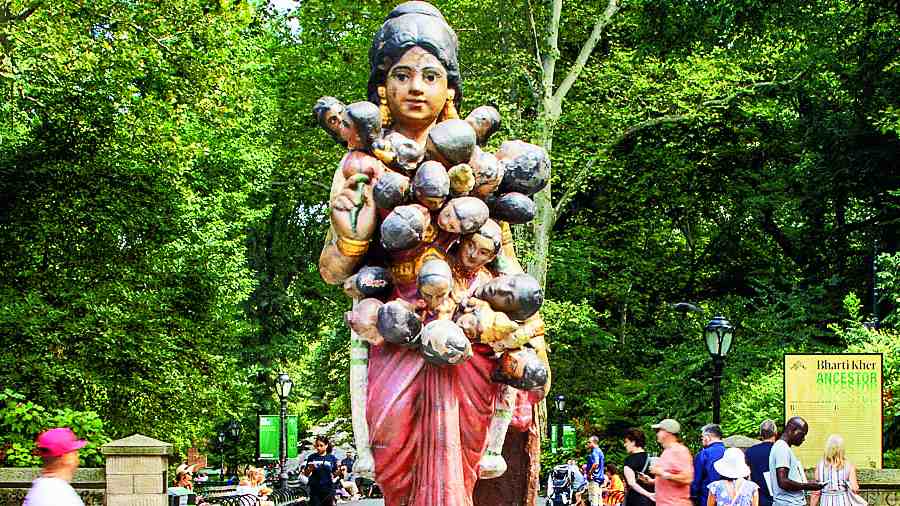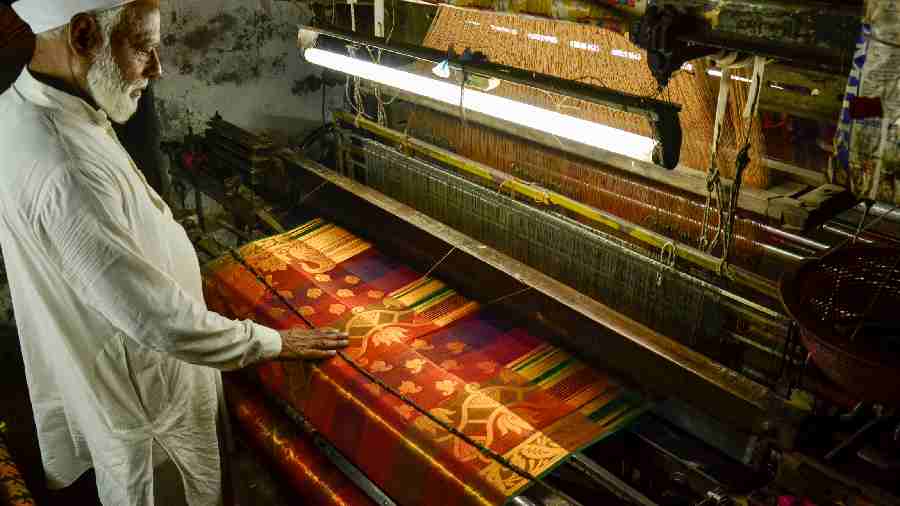A giant, sari-clad female figure is towering over Central Park in New York these days. She holds a lotus in one hand; her gaze is stretched outward like a tender embrace enfolding all in its path and she is almost 18 feet tall. From her upper body sprouts what looks like a multitude of breasts, or fruits, but on second glance they are revealed as heads resting on, or perhaps growing from, her bosom. She may be visiting from the land of ancient goddesses, but we could all do with a bit of her in these troubled times.
Ancestor, a bronze sculpture by Bharti Kher, has just been installed in Central Park and will be on display for a year. For Kher, a leading contemporary artist from India, this is her most ambitious work. The source of the mother figure is a miniature statue from her own Intermediaries series, assembled by recomposing broken clay figurines, says the 53-year-old artist. She finds these small objects in second-hand markets in India.
“Every meaning-laden detail and distressed surface of the original handcrafted object has been meticulously magnified to reflect the journey of this matriarch’s creation,” says Kher. She was raised and educated in the UK and moved to India in 1992. Her work reflects her cross-cultural identity. The sculpture was born of these many parts, travelling from one part of the world to another, and passing through the many hands of “superb craftspeople and casters”.
But Ancestor also, obviously, takes her shape from something vaster, reflected in her dimensions. Her idea is embedded in our collective consciousness, where all cultures coexist from all time and make for a common pool of imagery that startles us with recognition. So if she reminds us of the many-breasted Diana of Ephesus in one part of the world, she also evokes Ma Shashthi, the fertility goddess from Bengal, who appears with children arranged all over her and blesses women with progeny. Ancestor stirs in us a deep memory.
“Ancestor is really about families, the nature of womanhood and love. It’s about long journeys together over time through your shared past and into the future. It’s about knowing, empathy, seeing, forgiving and freedom from that all. She is the keeper of all things, all memories all stories. A wish and dream catcher,” says Kher.
Ancestor is powerful. Power is not the same as aggression. “A mother figure is so needed now in this time of deep polarity and instability. We need healing and a coming together,” says the artist.
Ancestor also echoes the spirit of the Statue of Liberty, she feels.
The representation of female bodies remains deeply problematic across cultures. “The female body is always a contested site of politics both here in America where she stands and at home in India where the female body is too often a site for patriarchal posturing that fails to protect,” says Kher.
And yet our mothers are so much more than this, “metaphysically, spiritually and emotionally”.
The earth is also a mother. “We are all guests here on this earth, on her sacred body.”
Ancestor is an embodiment of a power that nurtures; a hybrid entity that fosters all forms of life, like nature itself.
But do we remember her? Perhaps it is time we stopped and took a good look at her.











